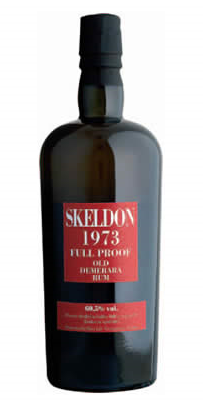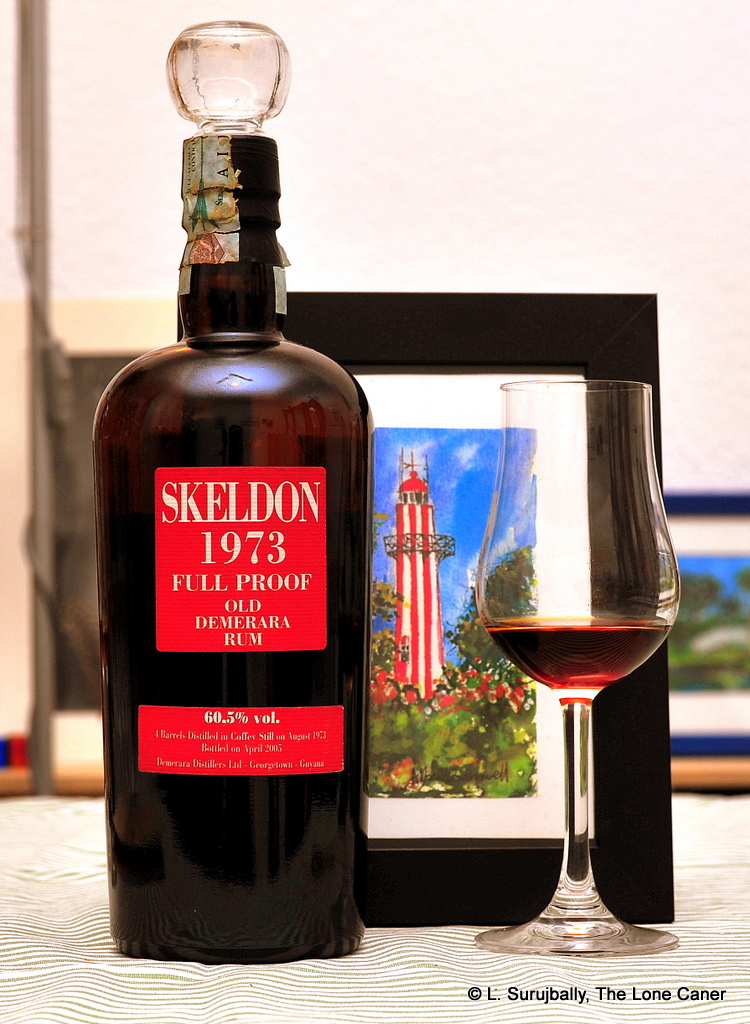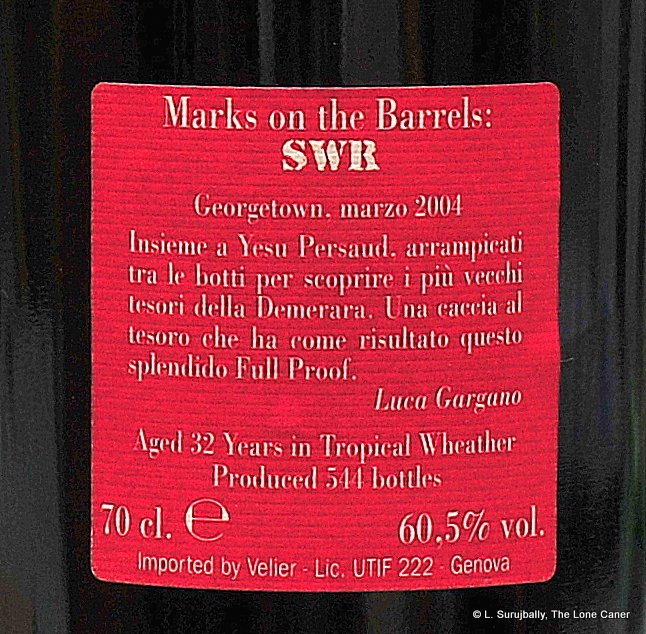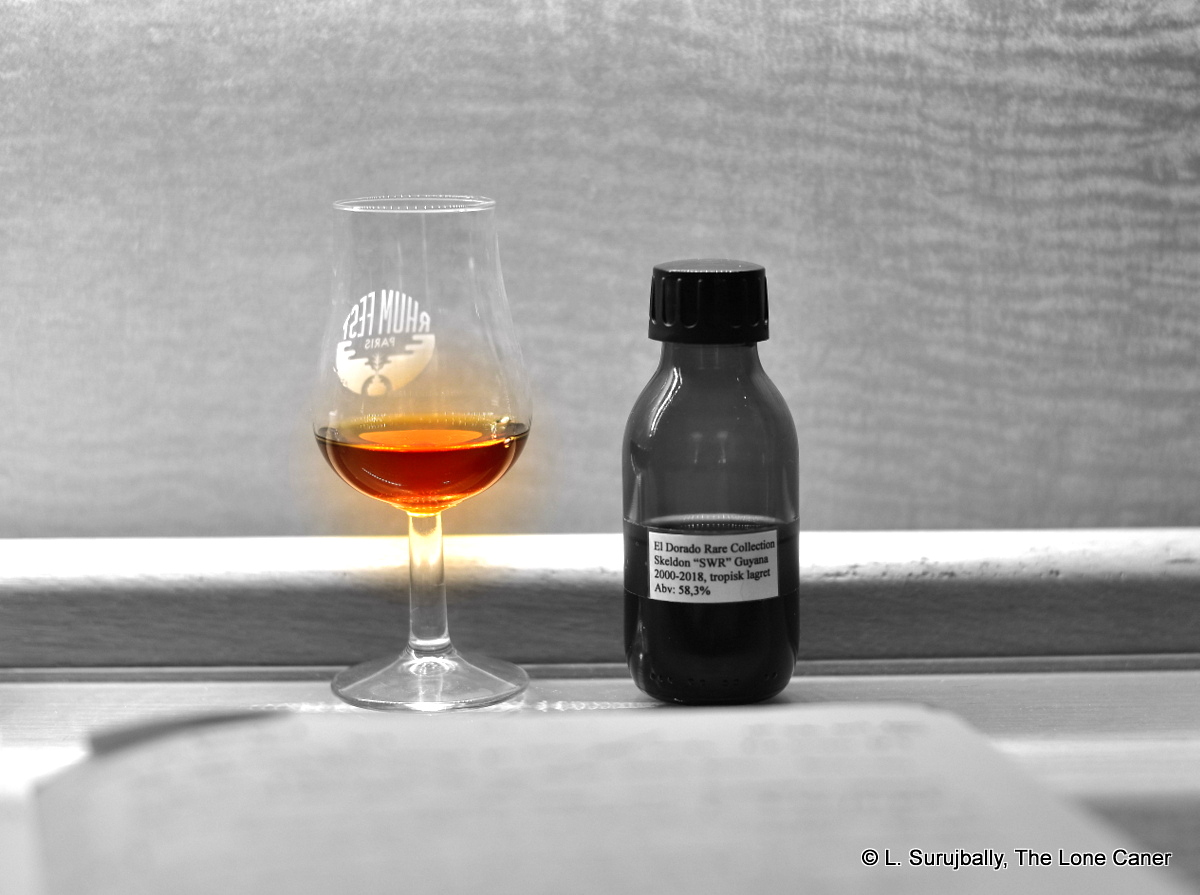
No matter how many Guyanese wooden-still rums get bottled sporting the famed letters PM, VSG or EHP, none of them save perhaps the very oldest have anything near the mythical cachet of rums bearing the name “Skeldon”. Even when I penned my original review of Velier’s Skeldon 1973 back in 2014 (when the company and Luca Gargano were hardly household names), it was clear that it had already become a cult rum. Nowadays the 1973 or 1978 rums sell for thousands of dollars apiece any time they come up for auction and that price and their incredible rarity makes them holy grails for many.
But for those who came to Velier’s rums late, or lack the deep pockets necessary to get one, there is an alternative, and that’s the very well assembled Skeldon 2000 that arrived on store shelves in late 2018 as part of the 3rd Release of DDL’s Rare Collection. This collection supplanted and replaced the Velier rums (though both parties always insisted they were DDL rums from the get-go) when it was seen that they were no mere niche products, but full blown money-spinners in their own right that aimed at the very top end of the rum market. The dependable old faithfuls of Enmore, Port Mourant and Versailles were produced in 2016 and 2017, and in 2018 the fans finally got what they were lusting for — an Albion 14 YO from 2004 and this one.
The Skeldon SWR 200 is aged 18 years in Guyana, bottled at a very attractive 58.3%, and is a recreation of the SWR profile (as were the original two marks), since Skeldon’s distillery apparatus had long ago been scrapped and destroyed, way back in the 1960s when Bookers was rationalizing the many Berbice-based distilleries. Essentially it was made by combining old distillery records (and, one hopes, old samples), tweaking the continuous Blair column still , taking a deep breath and sending a prayer to the Great Master Blender In The Sky.
What came out the other end and got stuffed into a bottle was quietly stunning. It exuded scents of deep and rich caramel, molasses, vanilla and anise (if the ED 21 YO had had less licorice and the ED 25YO no sugar, they would have come close to this). It developed into a damp mossy tropical forest steaming in the sun after a cloudburst, but this was mere background to the core aromas, which were cinnamon, molasses, cumin, salt caramel ice cream, licorice and a really strong hot chocolate drink sprinkled with, oh, more chocolate.
 Its standout aspect was how smooth it came across when tasted. As with the Albion we looked at before, the rum didn’t profile like anywhere near its true strength, was warm and firm and tasty, trending a bit towards being over-oaked and ever-so-slightly too tannic. But those powerful notes of unsweetened cooking chocolate, creme brulee, caramel, dulce de leche, molasses and cumin mitigated the wooden bite and provided a solid counterpoint into which subtler marzipan and mint-chocolate hints could be occasionally noticed, flitting quietly in and out. The finish continued these aspects while gradually fading out, and with some patience and concentration, port-flavoured tobacco, brown sugar and cumin could be discerned.
Its standout aspect was how smooth it came across when tasted. As with the Albion we looked at before, the rum didn’t profile like anywhere near its true strength, was warm and firm and tasty, trending a bit towards being over-oaked and ever-so-slightly too tannic. But those powerful notes of unsweetened cooking chocolate, creme brulee, caramel, dulce de leche, molasses and cumin mitigated the wooden bite and provided a solid counterpoint into which subtler marzipan and mint-chocolate hints could be occasionally noticed, flitting quietly in and out. The finish continued these aspects while gradually fading out, and with some patience and concentration, port-flavoured tobacco, brown sugar and cumin could be discerned.
Is it like the more famous Velier Skeldons I’ve tried? Yes…and no. There were differences, as is inevitable over such a span of years. What is important that the rum is a good one, noses well, tastes better, and its real failing may not be how it drinks, but how much it costs relative to other Demerara rums made by the independents…because really, not many can afford this kind of rum, and DDL’s dosage reputation would hinder easy acceptance of such a pricey spirit on its merits (a problem Velier would likely not have). In any event, there are few, if any, alive now who could even tell you what an “original” Skeldon rum tasted like, given that so much time has flowed past, that the distillery was closed so long ago, and that Skeldon’s distillery output even then was folded into other companies’ blends (remember, estate- and still-specific branding is a very recent phenomenon).
What is a quiet miracle, though, is that DDL managed to adhere with such fidelity to the Skeldon profile map (as currently understood) that I’m not sure I could pick the three SWR rums apart from each other if tried blind – though I think the thick richness of the multi-decade ageing of the 1973 and 1978 might give them away. That is quite an achievement for the 2000 DDL incarnation, and allows many new rum aficionados who want to know what the hooplah over Skeldon is about, to get an inkling of why there’s a fuss at all.
(#691)(87/100)
Other Notes
- In a situation that does not surprise me in the slightest, neither Release 2 nor Release 3 Rares are listed on El Dorado’s own website.
- That “Blair” still reference has caused some confusion, but I’m reasonably confident it’s the French Savalle continuous still brought over from Blairmont estate to Uitvlught back in the 1960s and to Diamond in late 1990s/early 2000s.

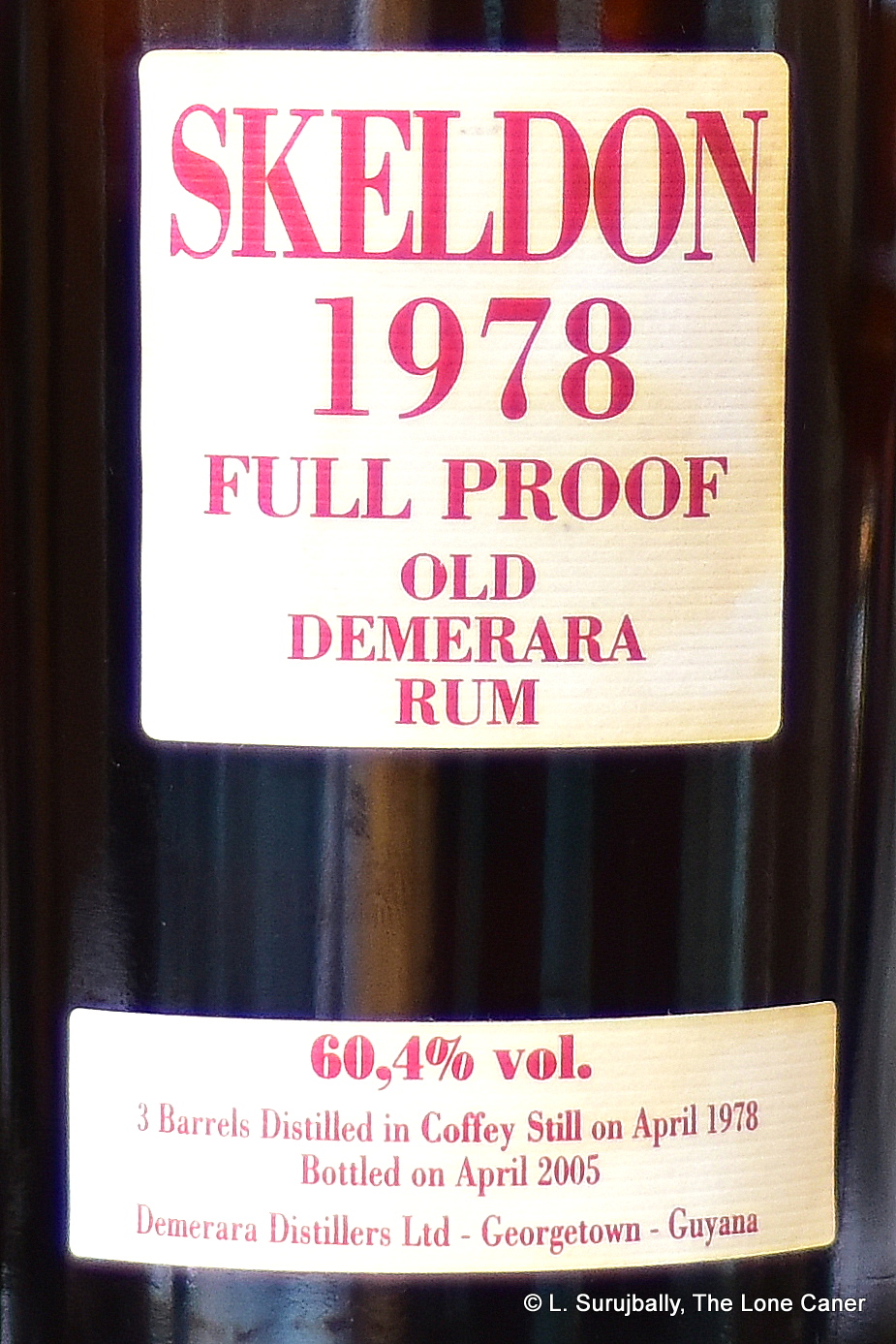 The history of the Skeldon 1978 bottling from a long-dismantled Savalle still is an odd one: the plantation is on the far eastern side of Guyana and the distillery has been shut down since 1960, though the original sugar factory’s remains continue to moulder away there, now replaced by a modern white elephant. It’s possible that the Savalle still which made it was taken elsewhere (Uitvlugt is the unconfirmed suspect) and this distillate hails from there rather than Skeldon — but certainly the “SWR” barrels ended up at Diamond, where Luca saw them gathering dust in the warehouse and convinced Yesu Persaud (the chairman of DDL at the time) to part with them. The 4-barrel 544-bottle outturn of the
The history of the Skeldon 1978 bottling from a long-dismantled Savalle still is an odd one: the plantation is on the far eastern side of Guyana and the distillery has been shut down since 1960, though the original sugar factory’s remains continue to moulder away there, now replaced by a modern white elephant. It’s possible that the Savalle still which made it was taken elsewhere (Uitvlugt is the unconfirmed suspect) and this distillate hails from there rather than Skeldon — but certainly the “SWR” barrels ended up at Diamond, where Luca saw them gathering dust in the warehouse and convinced Yesu Persaud (the chairman of DDL at the time) to part with them. The 4-barrel 544-bottle outturn of the 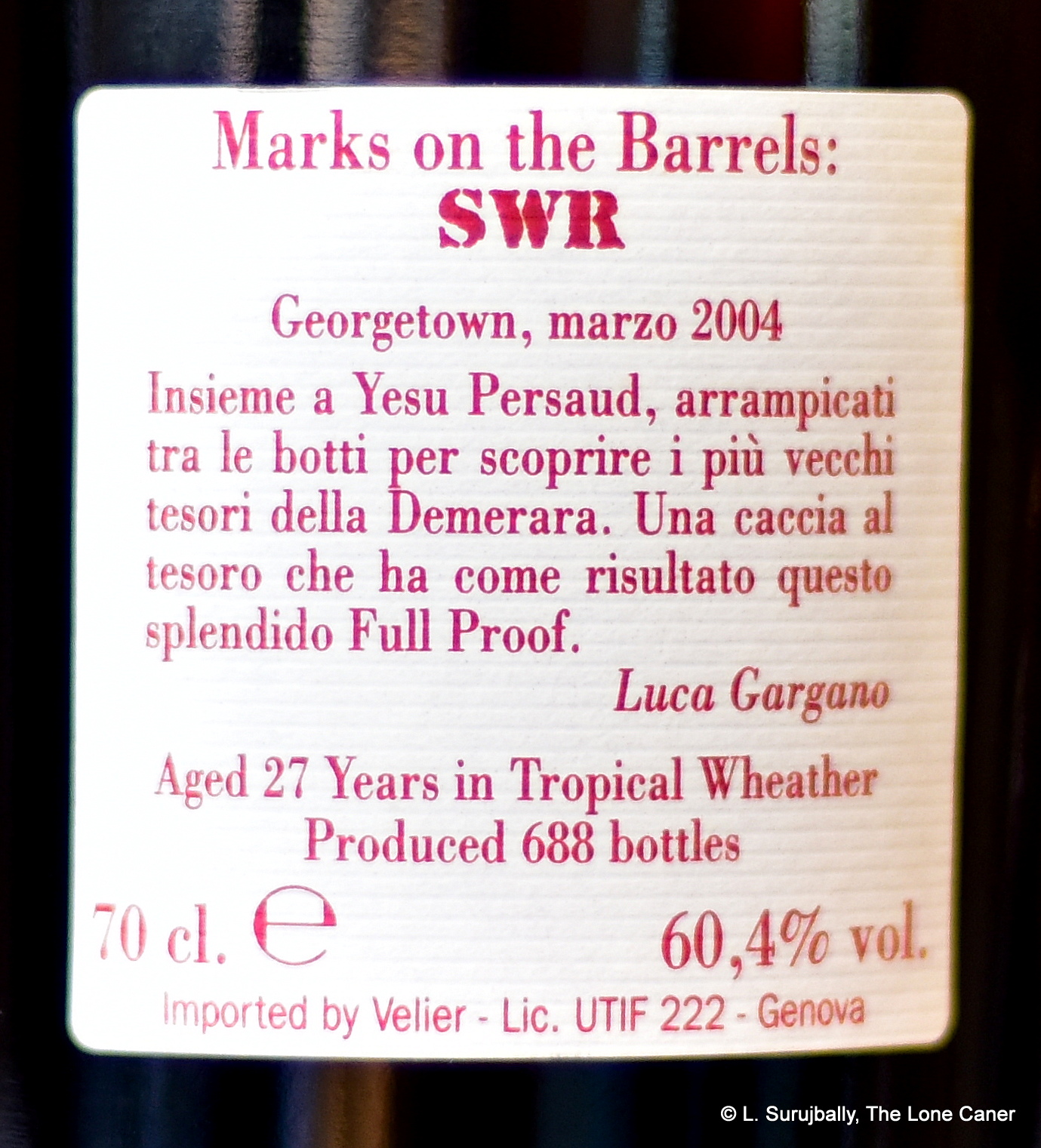 Although things at the Tasting were going faster than I was able to write (and listen), this was not a rum I wanted to be hurried with after waiting so long, and certainly it’s one with which to take one’s time. It unfolded gradually on the tongue, almost languorously and even at 60.4%, it was amazing how entirely under control it remained the entire time. Most of the tastes in the nose carried over, primarily anise, coffee and bitter chocolate, oranges, strong black tea, cumin, and that lentil soup / beef broth meatiness I remarked on earlier. But there were also more muted, subtler hints of papaya and fleshy fruits, aromatic tobacco, flambeed bananas and salty caramel. A rather dry note of over-roasted nuts came into play at the back end, a slight indeterminate bitterness (something like a manager who can never compliment your work without a closing criticism), but fortunately the muskier fruit and creamy notes ameliorated it for the most part. And while the finish was more a last bow on the stage than a true epilogue that added a few extra fillips of flavour, it was in no way disappointing, leaving me with a memory of coffee, nougat, salt caramel ice cream, fruits, raisins, licorice and light chocolate oranges.
Although things at the Tasting were going faster than I was able to write (and listen), this was not a rum I wanted to be hurried with after waiting so long, and certainly it’s one with which to take one’s time. It unfolded gradually on the tongue, almost languorously and even at 60.4%, it was amazing how entirely under control it remained the entire time. Most of the tastes in the nose carried over, primarily anise, coffee and bitter chocolate, oranges, strong black tea, cumin, and that lentil soup / beef broth meatiness I remarked on earlier. But there were also more muted, subtler hints of papaya and fleshy fruits, aromatic tobacco, flambeed bananas and salty caramel. A rather dry note of over-roasted nuts came into play at the back end, a slight indeterminate bitterness (something like a manager who can never compliment your work without a closing criticism), but fortunately the muskier fruit and creamy notes ameliorated it for the most part. And while the finish was more a last bow on the stage than a true epilogue that added a few extra fillips of flavour, it was in no way disappointing, leaving me with a memory of coffee, nougat, salt caramel ice cream, fruits, raisins, licorice and light chocolate oranges.